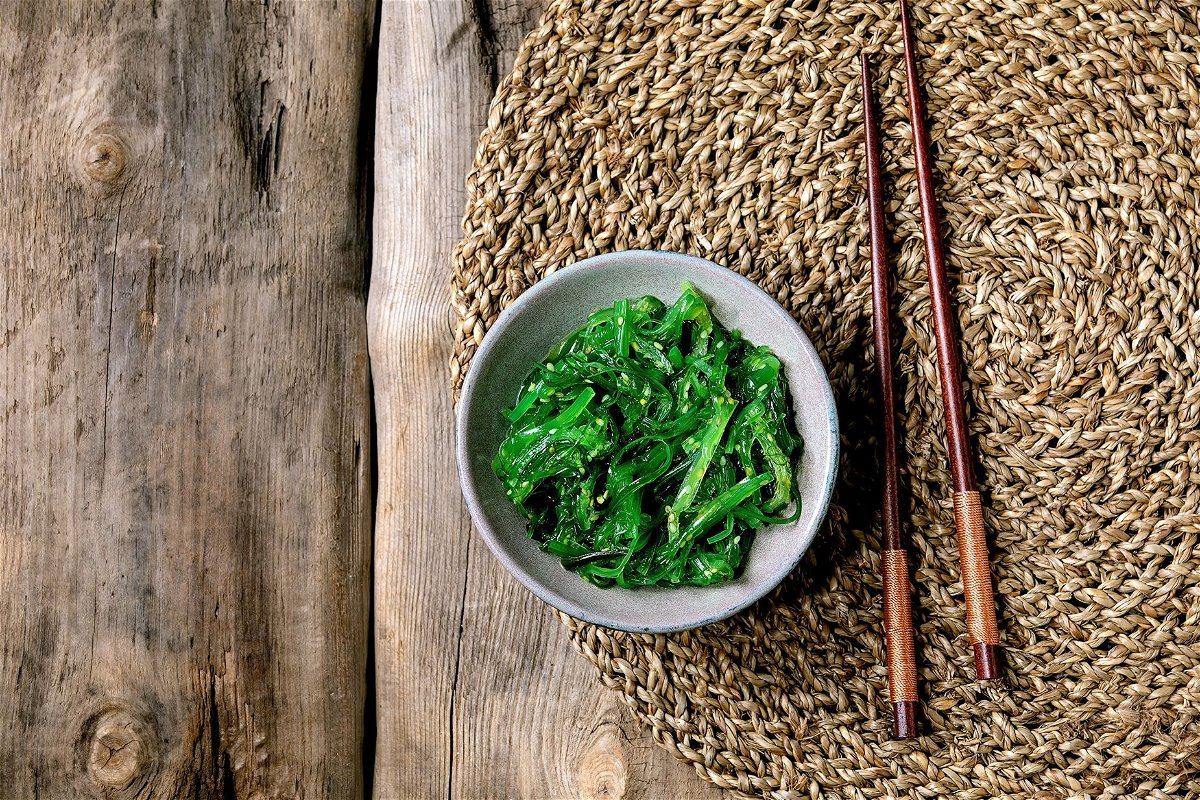From soups to cheese: what seaweed can bring to the dinner table

By Callum Sutherland, CNN
(CNN) — You may have come across it wrapped around rice and fish at a sushi restaurant, but when it comes to choosing what to spread on your toast in the morning, seaweed does not usually spring to mind.
Seaweed has long been popular in Asia, which is responsible for 98% of the annual 35 million metric tons of it sold worldwide, according to the UN’s Food and Agriculture Organization. However, a new culinary wave is seeing Western chefs experiment more with the ingredient, adding it to soups and smoothies.
One reason it is becoming increasingly popular is thanks to its green credentials. According to the Seaweed Manifesto, a UN report, cultivating the algae could be a way to capture and store planet-heating carbon dioxide. And because growing seaweed doesn’t need land or require irrigation, it could be more sustainable than traditional agriculture.
It can improve your health too. Known as a superfood, this sea vegetable is high in protein, amino acids, vitamins and essential minerals such as iron and calcium.
As the algae trend starts to bloom globally, here are some of the ways you can bring seaweed to your kitchen.
Seaweed jam
If you’re looking to take your breakfast ideas in a new direction, then seaweed could be the way to go. Miyeok, also known as “wakame,” is a variant of the algae found in the colder waters of the North Pacific Ocean.
When simmered with soy sauce, garlic, sugar and rice wine vinegar, the mixture reduces to a sticky, spreadable jam. It can be used as a condiment with seafood such as scallops, mixed with butter to fry with other proteins or simply spread on your toast as a snack.
Seaweed has long been a common ingredient in Korean cuisine. Chef Jun Lee, who runs a two-Michelin star restaurant in Seoul, called Soigné, often uses sea vegetables as a part of his meals.
“[Seaweed] can create a new category with unique flavors and textures that land vegetables can never deliver,” says Lee.
“It’s certainly one of the ‘herbs’ of the sea that can’t be overlooked in Korea’s vegetarian culture,” he adds.
Seaweed soup
Another classic Korean dish is miyeok-guk, a soup that contains miyeok, along with garlic, soy sauce, sesame oil and usually beef or a different protein
Although it is popular all year round, the soup is often eaten on birthdays. This comes from another tradition when seaweed is “eaten to restore the mother’s health after the birth of her child,” says Lee.
“The culture of eating miyeok-guk on birthdays has been created to commemorate the birth of a child and to thank the mother for giving birth to them,” he adds.
But seaweed soup isn’t only consumed in Asia. On Ireland’s remote west coast, doctor and chef Prannie Rhatigan uses the seaweed variety alaria (winged kelp) along with pumpkin to create a hearty autumnal soup.
“In the morning I usually swim in the sea; it’s really nice to have this soup afterwards at lunchtime. I just think I’m completely addicted to it,” says Rhatigan, whose recent cookbook “Irish Seaweed Kitchen” includes the recipe.
Alaria has a “mild chicken-like flavor,” she says, adding that it’s great for seaweed first-timers. “For anyone nervous about trying seaweed, serve them a bowl and encourage them to add a small amount. They always want more.”
Smoothies
Rhatigan also recommends adding seaweed to smoothies, suitable for breakfast, a midday snack or even an evening treat.
This is a quick way to give yourself a boost of vitamins including B, C, E and K.
One of her favorite smoothie recipes combines sea spaghetti (a long green alga), egg wrack and bladderwrack, both of which are dark in color with round air bladders, alongside ginger, pineapple and spinach.
“Personally, I could happily live on smoothies forever,” says Rhatigan. They are “the best of what land and sea have to offer.”
Cheese and butter
Another innovative use of the sea vegetable that really shows off its versatility is seaweed cheese and butter. In cooperation with Guernsey Dairy, the UK-based Seaweed Food Company has experimented with using algae in dairy products.
Naomi Tustin, the company’s founder, explains that it added dulse, a long, red algae from the North Atlantic, and sea lettuce to cheese, and left it to mature for three months.
“It’s been quite popular, so we’ve now gone on to [produce] our second batch of 30 kilos. Seaweed is a flavor enhancer, so you find that the cheese is cheesier,” she says.
The company has done the same with butter, which can be simply spread on toast or used in dishes such as scrambled eggs. All these recipes and more will be included in the company’s book “Vraic,” due to be released in October, which will also detail the history of seaweed as a food source.
The opportunities are endless. Tustin is most excited about a new recipe that incorporates sea spaghetti in onion bhajis. She believes that these inventive dishes will bust people’s misconceptions of seaweed as “slimy and a bit smelly.”
The-CNN-Wire
™ & © 2023 Cable News Network, Inc., a Warner Bros. Discovery Company. All rights reserved.